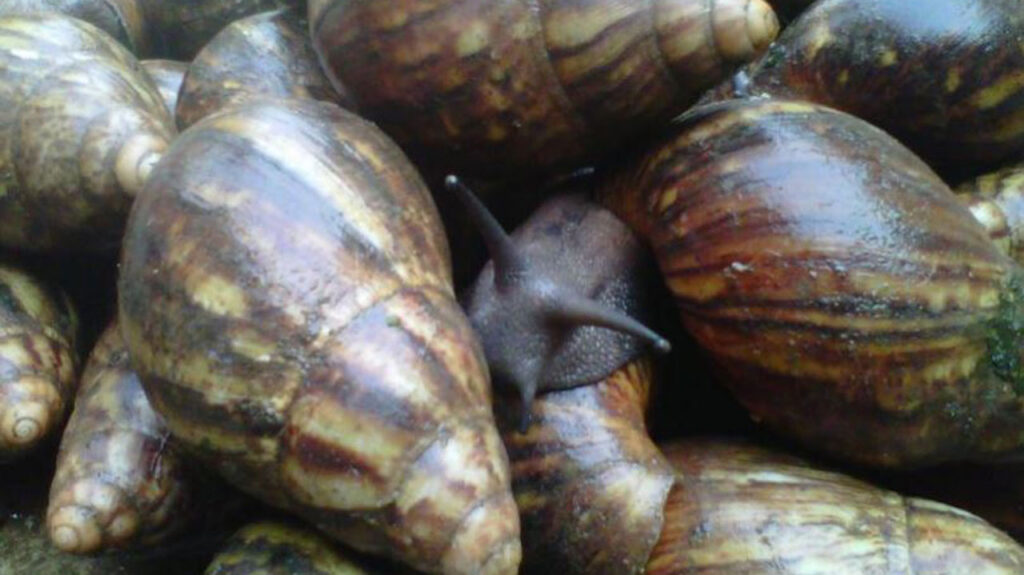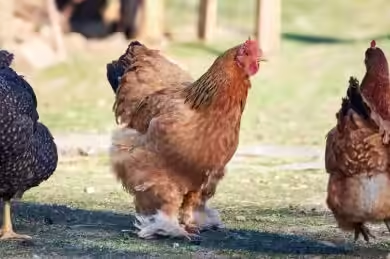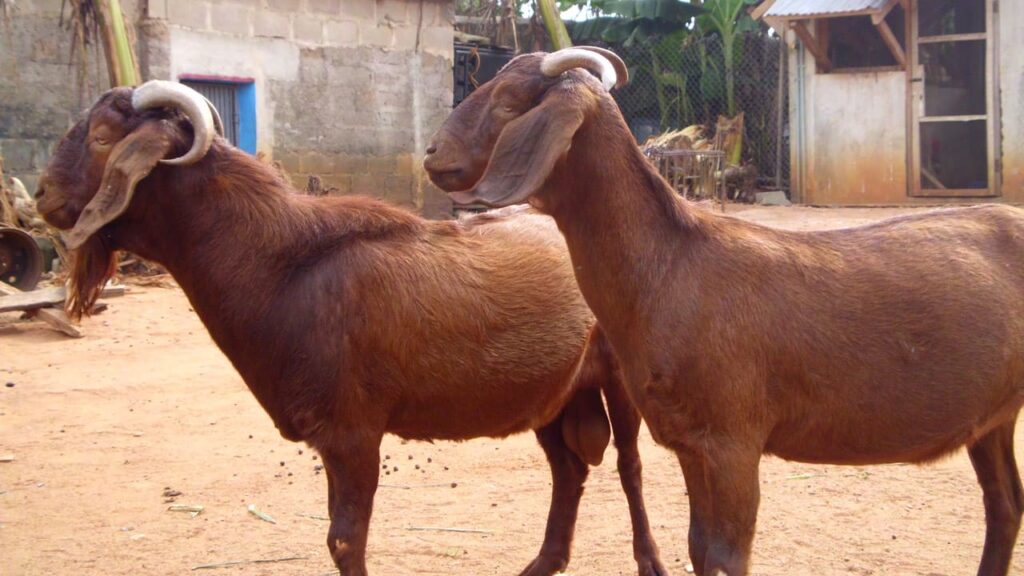The quest for impactful agricultural ventures, particularly those requiring minimal land and capital, often leads to surprising discoveries. In Nigeria, one such discovery rapidly gaining prominence is heliciculture, more commonly known as snail farming.
When I first heard about it, honestly, I was a bit skeptical. Snails? Really? But the more I dug in, the more I saw the truly massive potential. This isn’t just some tiny hobby for fun; it’s a fast-growing agribusiness. And it’s got solid demand, both locally and all over the world. Crazy, right?
But listen, here’s the real talk. I’ve seen too many eager farmers jump into snail farming only to hit unexpected roadblocks: snails growing painfully slow, high mortality rates, or worse, finding out the market just isn’t interested in their chosen snail. To dodge these frustrating and costly mistakes, it all boils down to one absolutely crucial decision. And that decision is: what type of snail is best to farm in Nigeria?
It’s not as simple as just picking the biggest one, or the one that grows fastest. Nah. You gotta figure out which snails actually thrive in our particular climate. Which ones consistently pop out a lot of babies? And—this is the absolute key, folks—which ones will actually sell for a good price when they’re ready for market? Get this part right, and honestly? You’re already, like, halfway there to building a really profitable snail farming business. Trust me on this.
Why Snail Farming is a Smart Bet in Nigeria
Snail farming? It just hits different, doesn’t it? It genuinely stands out for a bunch of compelling reasons. Seriously, it’s a pretty sweet deal for farmers who’ve been around the block. And, hey, it’s also great for anyone just trying to get started in the world of entrepreneurship.
- Big Demand: Here at home, snails are a huge favorite. People often call them “Congo meat.” Just picture all the parties, all the restaurants, all the home kitchens where snails are practically a must-have. And the demand? It’s way, way higher than what we’re currently supplying. Especially when the dry season rolls around and wild snails become super hard to find. And get this: beyond our own country, there’s a huge international market. We’re talking Europe. We’re talking Asia. Big time. They want both the meat and that increasingly valuable snail slime. Yeah, the slime. It’s actually a really hot item in cosmetics and pharmaceuticals. Pretty wild, right? Who’d have thought a snail could be so versatile?
- Low Startup Costs: Now, compare this to raising chickens or fish. Getting into snails? It simply won’t break your bank. You genuinely don’t need expensive equipment. Or sprawling acres of land. For instance, I know a farmer, Mama Nkechi, over in Aba. She started her snail farm with just two small wooden crates in her backyard. She bought only 50 Archachatina marginata breeders. Within 18 months, she was regularly supplying a local restaurant and had doubled her stock, all from a space smaller than an average living room. This just shows how you can kick off a successful snail farm right in people’s backyards, cutting down on land costs like crazy. Plus, snails just munch on stuff that’s easy to find—things like leaves, fruits, and everyday veggies. That seriously slashes your feed bills. A major relief, believe me, especially when you’re just starting. You can even rear snails in a bucket for an ultra-low-cost start!
- Small Space? No Problem: This, my friend, is a total game-changer. Especially for folks in the city. Or anyone who has limited land. You can set up a seriously productive snailery in a tiny backyard. A shed works too. Or even stacked trays, if you’re clever about it. It’s surprisingly efficient, you know?
- Good for the Planet: Snail farming is super low-impact on the environment. For one, they don’t make much waste. And their eating habits? They often involve cleaning up organic stuff. On top of that, it actually helps take the pressure off wild snail populations. That’s genuinely great for biodiversity. Win-win, I say!
- Healthy Eating: Snail meat? Oh, it’s a powerhouse. A real protein punch. Plus, it’s packed with essential minerals like iron and calcium. And here’s a shocker: it’s surprisingly low in fat and cholesterol. That makes it a fantastic, really healthy alternative to red meat. Which is a big win for the growing number of health-conscious buyers out there. And hey, it tastes good too! Don’t knock it till you try it.
Why Picking the Right Snail Species is a Game-Changer
Imagine trying to raise chickens that prefer cold weather. But you’re in a tropical country. Sounds a bit ridiculous, doesn’t it? Well, it’s exactly the same deal with snails.
The specific species you pick for your farm directly affects everything. I mean, everything. How fast they grow. How many babies they have. How well they resist diseases. And ultimately, how much money you’ll end up making.
Mess this part up, and you could be looking at high losses. Slow growth. And, let’s be honest, a less-than-stellar bottom line. We’re aiming for smart moves here, not expensive lessons learned the hard way. It really makes you wonder, why do so many people just jump into farming without truly, deeply considering this critical first step? It’s like trying to build a house without a proper blueprint. You just wouldn’t do that, would you?
The Big Names: What Type of Snail is Best to Farm in Nigeria?
When people ask what type of snail is best to farm in Nigeria, three heavy hitters always pop up. Without fail. Each one brings something unique to the table. This makes them solid choices for a profitable snail business.
Archachatina marginata (Giant West African Snail): The Crowd Pleaser
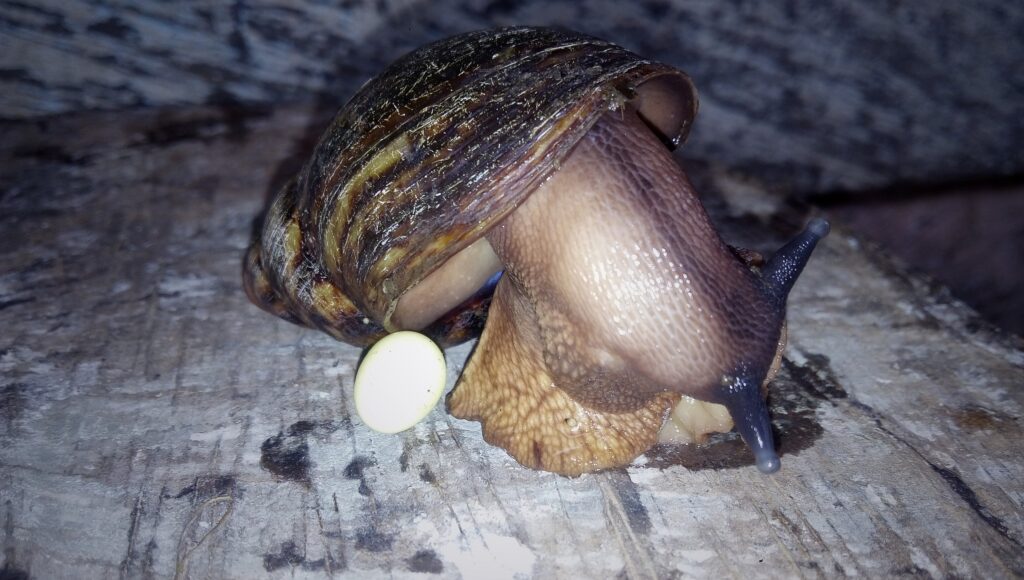
If you sit down and chat with experienced snail farmers here in Nigeria, many, many of them will tell you straight up: go for Archachatina marginata. This snail? It’s a real winner in our local market. A true champion.
- Size and Growth Potential: This snail is, arguably, the biggest of the common edible species. Often, they hit impressive lengths, like up to 20 cm! Bigger snail, you guessed it, means more meat. And more meat, naturally, means more cash per snail. While they might take a little bit longer to get ready for laying eggs—we’re talking around 8-9 months, give or take—their sturdy growth genuinely guarantees a good chunk of meat. They can also live for a good long time, sometimes up to 10 years. That means they’re a long-term investment for your breeding stock. It’s comforting to know you’ve got a steady, valuable asset on your hands, isn’t it? Almost like a little retirement plan crawling around in your pens.
- Reproduction and Survival: Sure, A. marginata lays fewer eggs per clutch—usually around 5 to 14—compared to some others. But here’s the thing: their eggs are noticeably bigger. And they have a tougher, yellowish shell. This often leads to more successful hatches. Plus, better survival rates for the tiny hatchlings. You might get 2 to 4 clutches a year. But the quality and survival of those babies often more than make up for the smaller number. It’s almost like they prioritize quality over sheer quantity, which, for a farmer, can be a huge relief in terms of day-to-day management. Less drama, more solid results.
- Market Value and Meat Quality: In Nigerian markets, Archachatina marginata is highly valued. Its meat is widely known for being super high quality. Tender. And, you know, a good, substantial portion. That often means it consistently pulls in the best prices. This makes it a top pick for farmers who are all about those premium sales. You might even find yourself feeling a little proud when you see how quickly these beauties sell out! It’s a good feeling, a real sense of accomplishment.
Achatina achatina (Giant Ghana Snail / Giant Tiger Snail): The Egg Machine

This one’s a very close second. And it’s famous for one thing: how many eggs it can lay. Truly, an absolute powerhouse when it comes to reproduction.
- Size and Egg-Laying: The Achatina achatina holds the title of the second-largest land snail in the world. It can totally hold its own against A. marginata in terms of size. But its real superpower? Its absolutely incredible egg production.We’re talking 200 to 500 eggs per clutch! And it can do that with 3 to 4 clutches a year! Some farmers even report a mind-boggling 1,200 eggs annually from just one snail. This high number of offspring means your farm can grow like crazy. Those eggs usually hatch in 21 to 32 days. It honestly begs the question: how on earth do you even manage that many tiny snails? (Don’t worry, we’ll get to that later!) It’s a delightful problem to have, truly. A very busy problem.
- Growth and Maturity: Achatina achatina hits maturity pretty fast. Often, it starts to lay eggs around 6 to 7 months old. Their survival rate is decent, usually hovering around 30-50%. Which, when you combine it with their massive egg output, still translates to a whole lot of snails ready for harvest. It’s definitely a numbers game, and this snail plays it exceptionally well.
- Market Appeal and Profit: This snail is incredibly popular across Nigeria and West Africa. Why? Thanks to its size and high yield. Its strong commercial viability makes it a go-to for anyone looking to maximize production. And, naturally, keep up with demand. If your goal is volume, absolute volume, this one’s definitely calling your name. Loudly.
Achatina fulica (East African Land Snail): The Tough Survivor
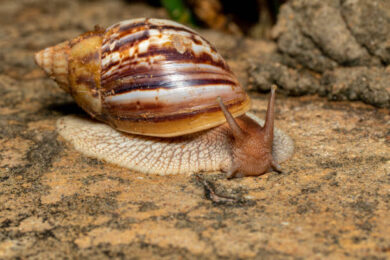
You might think of Achatina fulica as the underdog. It’s often overlooked. But it’s got some serious advantages. Especially its incredible ability to bounce back from tough conditions.
- Adaptability and Resilience: This species is widely known for being super tough. It can handle a wider range of climates. So, if you’re in an area with slightly less consistent humidity, or you’re a newbie still getting the hang of environmental controls, A. fulica can be more forgiving. It is generally smaller than its two giant cousins. But its resilience can certainly ease a beginner’s worries, which, let’s be honest, is a major plus. No need to fret as much about minor hiccups when you’re just finding your footing.
- Reproduction: Don’t let its smaller stature fool you. Achatina fulica is also incredibly prolific. It lays 200 to 500 eggs per clutch. And it can do that 3 to 6 times a year! Plus, its eggs often hatch the fastest. Sometimes in as little as two weeks. So, while it’s smaller, it can fill up your pens fast! Like, really fast.
- What Nigerians Think About It: Here’s the catch, the little curveball: Achatina fulica meat tends to be softer than what you get from A. marginata or A. achatina. While that might not be everyone’s first choice among Nigerian consumers—some prefer a firmer bite—it’s actually highly sought after in European markets. Soft snail meat is common and preferred there. So, if exporting is part of your grand plan, A. fulica could actually be a fantastic fit. It gives you high yields for a very specific market segment. It really makes you think, doesn’t it? Sometimes what’s less popular locally can be a goldmine globally. It’s all about finding your unique niche.
Quick Comparison: Which Snail Type Fits Your Farm Best?
Picking what type of snail is best to farm in Nigeria for your specific situation means balancing these key points. It’s a bit like a puzzle, honestly.
To help you visualize the differences at a glance, here’s a quick comparison table of our top snail species for farming in Nigeria:
| Feature | Archachatina marginata | Achatina achatina | Achatina fulica |
|---|---|---|---|
| Common Names | Giant West African Snail | Giant Ghana Snail / Tiger Snail | East African Land Snail |
| Max Size | Up to 20 cm | Up to 30 cm (2nd largest) | Smaller (5-10 cm average) |
| Maturity Age | 8-9 months | 6-7 months | Fastest (often 2 weeks hatching, quick to maturity) |
| Eggs per Clutch | 5-14 (bigger, tougher eggs) | 200-500 | 200-500 |
| Clutches per Year | 2-4 | 3-4 | 3-6 |
| Hatchling Survival | Higher (quality over quantity) | Decent (30-50%) | High (prolific) |
| Local Market Value | Premium/Highest price (firm meat) | High (size, yield) | Lower (softer meat) |
| Export Potential | Moderate (for African diaspora) | Moderate (for African diaspora) | High (European preference for soft meat) |
| Beginner Friendly? | Sturdy, better survival rate | Good, but needs consistent care | Most resilient/forgiving |
- Growth Rates: Archachatina marginata typically grows fastest to a size you can sell. That’s awesome for quicker returns. Achatina achatina also grows well. And while Achatina fulica is smaller overall, it reaches maturity quickly. But remember, faster growth doesn’t always equal easier farming—sometimes those big growers need more consistent care. It’s a trade-off, isn’t it? Something to mull over.
- Egg Power: If you’re all about huge numbers of eggs, Achatina achatina and Achatina fulica win hands down. They’re incredible. But Archachatina marginata balances this with bigger eggs. And, crucially, more hatchlings actually making it to adulthood. That means healthier, viable snails. So, is it about having a million eggs, or is it about having a solid number of surviving, healthy snails? That’s a question every farmer has to ponder. There’s no single “right” answer here. Just the right answer for you.
- Toughness and Health: Archachatina marginata is often praised for being sturdy. And having better survival rates. This can really cut down on losses. And make your life easier. This often translates to less heartache and more predictable outcomes. Which, trust me, you’ll appreciate. Farming has enough surprises already!
- Market Value Here at Home: For the local Nigerian market, Archachatina marginata usually gets the top prices. Why? Because of its size and meat texture. Achatina achatina is also highly valued. Achatina fulica might sell for a bit less locally because of its softer meat. But its export potential is huge. Are you willing to diversify your market to maximize profit? Even if it means going against local preference? It’s a strategic choice, after all. And a bold one, perhaps.
- Beginner-Friendly: All three are generally fine for farming. A. fulica‘s hardiness can be a plus if you’re just starting. And the bigger egg size of A. marginata might make handling those first batches a little simpler. Honestly, getting the environment and feeding right matters more than any inherent “ease” of a species. It’s less about the snail and more about your commitment! You’re the one making the difference, after all.
What to Think About Before Picking Your Snail Species in Nigeria
Before you even think about buying your first breeder snails, you’ve got to sit down. And really nail down your vision for the farm. This is about choosing the right snail species for your climate and market.
Your Business Goals: Small-Scale, Big Commercial Farm, or Exporting?
- Small-Scale (Backyard): If you’re just dipping your toes in, maybe for your family or selling to a few neighbors, any of the three species can work. Just focus on what feels manageable. And what sells well locally. Keep it simple, right? Don’t overcomplicate it.
- Commercial: For bigger operations aiming to supply restaurants and markets consistently, the high yields of Achatina achatina really start to look good. Archachatina marginata also stays a strong contender for its premium market appeal. It’s a serious numbers game at this level. You might even want to consider starting with 1000 snails for a commercial push.
- Export: If you’re dreaming of sending snails overseas, especially to Europe, Achatina fulica‘s softer meat might be exactly what those markets want. For African communities living abroad, the big ones (A. marginata and A. achatina) are usually preferred. Is your heart set on local sales, or are you ready to think bigger? Even if it means a different kind of snail and a whole new set of rules and challenges?
Climate and How Hot/Humid It Gets:
- Snails are cold-blooded. So they love consistent, humid, and cool spots. Think 10-23°C with over 75% humidity. Nigeria’s climate is generally good for them. But those dry seasons can be tricky. Understanding how each species handles small temperature swings is absolutely key. I once watched a farmer lose a big chunk of his snails—he just didn’t realize how fast the dry harmattan winds could literally dry out his snail pens. That was a tough lesson in managing the micro-environment! It’s a constant battle with nature, isn’t it? You learn quickly, or you pay the price.
What You Have Available: Space, Money, and Time
- Space: How much land or indoor space do you actually have? This directly impacts how many snails you can raise comfortably. Don’t overcrowd them! They need their room to grow.
- Capital: Your starting budget will dictate the size of your initial stock. And how fancy your snail housing can be. Remember, good breeders are an investment. Not an expense. Don’t be afraid to start small if capital is tight; many giants in this business began with just a few good snails. That’s a perfectly valid path, a step-by-step climb.
- Labor: While snails don’t demand as much hands-on time as, say, chickens, you still need to dedicate hours. For feeding. For cleaning. And for checking on them. Are you truly prepared for that commitment? Even on those scorching afternoons when all you want to do is relax under a fan? It’s a lifestyle choice, after all.
Who Are You Selling To? Locals or International Buyers?
- Do your homework! What kind of snails are people buying most in your town or city? Are local hotels specifically asking for a certain size? Your target market will heavily influence your choice. If exporting is your goal, dig into specific import rules. And find out which species are hot in those countries. It’s amazing how varied preferences can be, even for the same animal! Don’t assume anything.
Can You Get the Right Food?
- Snails aren’t fussy eaters. But to grow fast and reproduce well, they need a balanced diet. Can you consistently get pawpaw leaves, cocoyam, or other natural foods cheaply? And don’t forget calcium sources—they’re absolutely vital for strong shells. Sometimes, what seems cheap initially might become a logistical nightmare later. Better to figure that out now, right? Before you commit.
Getting Good Breeder Snails for Your Nigerian Farm
Figuring out what type of snail is best to farm in Nigeria is one thing. Actually getting your hands on the right stock? That’s another beast entirely. This is one area where you absolutely, positively don’t want to cut corners.
- Finding Reputable Suppliers in Nigeria: Look for established snail farms. Agricultural universities (especially those working with NAERLS). Or trusted individual breeders. Go to farm shows. Join local farming groups. And always, always ask around for recommendations. A good supplier should be upfront about where their snails come from. And how healthy they are. Don’t just buy from anyone on the roadside—your entire investment hinges on this. It’s truly worth the extra legwork.
- What to Look for in Healthy, Productive Breeder Snails: When you’re inspecting potential breeders, keep this checklist handy. Print it out, even!
- Active and Alert: Healthy snails aren’t just hiding in their shells all the time. They should react when you gently handle them. A sluggish snail might be a sign of trouble brewing.
- Strong, Intact Shells: Steer clear of any snails with cracked, thin, or damaged shells. A solid shell means the snail is healthy and getting enough calcium. See a “lip” at the shell’s opening? That means it’s mature. It’s kind of like checking the tires on a car before a long trip—you wouldn’t leave without a good look, would you?
- Good Weight: They should feel heavy for their size. Not light. Not empty. A well-fed snail just has a healthy heft to it.
- Clean Mucus: Healthy snails produce clear, clean mucus. This tells you they’re well-hydrated. And generally in good shape. Cloudy or bubbly mucus? That’s a definite red flag. Pay attention to those little details.
- How Much to Invest Initially: Just know that quality often costs a bit more. It might be tempting to grab cheaper, smaller snails. But putting your money into healthy, mature breeders will totally pay off. With faster reproduction. And healthier offspring down the line. If you’re thinking of starting a small commercial snail farm with, say, 200 snails, a big chunk of your initial cash will go towards getting these prime breeders. Think of it as investing in the future health and success of your entire farm. It’s like buying a good foundation for a house—you don’t skimp there, do you? You’ll absolutely thank yourself later. To get a better idea of initial stock, check out how many snails you need to get started.
Setting Up Your Farm for the Best Snail Types in Nigeria
Once you’ve decided what type of snail is best to farm in Nigeria for your goals and you’ve got your stock, the very next step is creating the perfect home for them. This is where your day-to-day effort really, really makes a difference.
Snail Housing (Snailery): Building the Perfect Home
A well-planned snailery isn’t just nice to have. It’s essential for your snails to grow and reproduce optimally. Here’s a step-by-step guide to setting up a basic backyard snailery. This covers the best method of heliculture for beginners:
- Choose the Right Soil Type:
- Opt for rich, loose, loamy soil. This type allows for good drainage, aeration, and holds moisture well—all vital for snail health and egg-laying.
- Avoid problematic soils: Steer clear of hard, sandy, or clay soils. Clay gets waterlogged and compacts; sandy soil drains too quickly; hard soil makes burrowing impossible.
- Achieve Optimal Depth: Aim for at least 15-20 cm (about 6-8 inches) of soil depth in your pens. This gives them enough room to burrow and lay eggs comfortably.
- Prepare the Soil: Lightly moisten the soil before introducing snails. Ensure it’s free of pesticides, chemicals, or sharp objects.
- Manage Temperature and Humidity:
- Location, Location, Location: Place your snailery in a cool, shaded spot. Protect it from direct sunlight and strong winds. Winds can dry snails out super fast, forcing them to go dormant (a kind of hibernation).
- Natural Shading: I still vividly remember visiting a snail farm near my village. The farmer there had cleverly planted banana and plantain trees around his pens. He explained how these plants naturally shaded the area. And kept the humidity up—a simple, brilliant trick!
- Consistent Moisture: Water the soil regularly (but never making it soggy, mind you). Using mulching materials like fresh leaves or damp cloths helps keep that crucial high humidity consistent. It’s a delicate balance. And sometimes, especially when the weather changes abruptly, it can feel like you’re playing a perpetual game of “guess the humidity.” But you’ll definitely get the hang of it. We all do.
- Keep Predators Out (and Snails In!):
- Snails are slow. This, naturally, makes them easy targets. Your snailery needs strong defenses against predators. We’re talking things like rats, snakes, birds, ants, and even your own curious pets.
- Secure Fencing: Use fine mesh wire or netting around your pens. This acts as your primary barrier.
- Escape-Proof Design: Make absolutely sure there are no escape routes. Seriously, snails are surprisingly good at finding tiny ways out! It’s enough to make you pull your hair out sometimes, but trust me, vigilance pays off. A little paranoia here actually goes a long way.
Feeding Your Snails Right for Growth and Reproduction
Snails might not be picky eaters. But giving them a balanced diet? That’s how you get them to grow faster. And produce more. It’s simple biology. This is the secret of snail farming: it’s not just what you feed them, but how and when.
- Natural Foods: Leaves, Fruits, and Veggies: This is the core of their diet. Offer a mix of fresh, unsalted foods. Things like pawpaw leaves, cocoyam leaves, cassava leaves, plantain leaves, banana peels, pumpkin, watermelon, lettuce, and cabbage. Switch it up to make sure they get all the nutrients they need. Variety isn’t just the spice of life; it’s essential for snails too! Think of it as their daily salad bar—a gourmet one, if you’re lucky.
- Calcium for Strong Shells: This is a big one. No compromises here! Snails need tons, absolute tons, of calcium to build their shells. And to produce eggs. Give them crushed eggshells, limestone, or bone meal. You can mix it into their food. Or just leave it out for them. Without enough calcium, their shells get weak. And believe me, you don’t want a snail with a brittle shell—it’s a recipe for disaster. Weak shells mean vulnerable snails. And nobody wants that.
- Commercial Feeds and Supplements: While not a must for backyard setups, commercial snail feeds can really boost growth. Especially for bigger farms aiming for quicker harvests. These usually have a good balance of protein, carbs, and minerals. Some farmers swear by them. While others prefer a purely natural diet. There’s definitely a bit of a debate there in the farming community. But both can work with careful management. It boils down to your budget. And your philosophy, really.
- When to Feed Them: Snails are night owls. The best time to feed them is in the evening. That’s when they’re most active. Put out fresh food daily. And clear away any uneaten bits the next morning. This stops mold. And keeps pests away. It’s their dinner time. And they appreciate fresh fare just like we do! Who doesn’t love a fresh meal?
General Farm Management Tips
Good management keeps your snails happy. Healthy. And making you money. Simple as that.
- Cleanliness is Key: Keeping things clean is paramount in snail farming. Absolutely paramount. Regularly remove snail droppings. And leftover food. This stops bad bacteria and fungi from building up. Which can cause diseases. A clean snailery is a happy snailery. And a happy snailery is a profitable one! It’s a simple, undeniable truth.
- Checking on Them: Make it a habit. Check on your snails often. Are they active? Do their shells look good? If you see anything unusual—like a snail acting weird, or a damaged shell—look into it right away. Early detection can save you a lot of headache (and, let’s face it, money) down the line. Trust your gut if something feels off.
- Breeding and Hatchling Care: Snails are hermaphrodites. Yeah, they have both male and female parts. But they still need a partner to mate. Once they lay eggs, you might want to carefully gather them. And put them in separate hatching bins with perfect soil conditions. As the babies grow, separate them by age and size. This stops them from eating each other (yes, that happens!) and helps them grow evenly. Managing hundreds or even thousands of tiny hatchlings can feel overwhelming. But it’s a genuinely joyful challenge when you see them thrive. It’s a tiny, slimy miracle, really. If you’re curious about the process, you can learn more about how snails reproduce.
Selling Your Nigerian-Farmed Snails: Marketing and Profitability
You’ve put in all the hard work. Now it’s time to cash in! Knowing what type of snail is best to farm in Nigeria is just half the battle. Knowing how to sell them well? That’s the other crucial half.
- Local Buyers and Eateries: Your immediate market is your best friend. Period. Build connections with vendors at local markets. Restaurant owners. And hotel chefs. Make sure you can consistently supply them with good quality. Many Nigerians really prefer buying fresh, live snails. Sometimes, just showing up with a box of plump, healthy snails is all the convincing they need! Word of mouth travels fast for good produce.
- Export Opportunities: There’s a serious global appetite for snail products. African restaurants and shops in places like Europe and North America are always looking for processed snail meat. And beyond the meat, the market for snail slime (mucin) is blowing up in the cosmetic and pharmaceutical industries. Because of its amazing healing properties. This could be a high-value niche to explore as your farm gets bigger. Could your snails be the secret ingredient in someone’s next luxury face cream? It’s not as far-fetched as it sounds! The possibilities are quite exciting, aren’t they?
- Smart Pricing: Snail prices go up and down. That’s just how markets work. They typically shoot up during the dry season (March-December). Why? Because wild snails are scarce then. That’s your prime time to sell your farmed snails for top dollar. Often between ₦500 – ₦1,500 per snail, depending on size and species. Plan your breeding cycles to hit these peak demand periods. Timing, as they say, is everything. And in farming, it’s often the difference between a decent year and a truly fantastic one. For more insights, check out how profitable snail farming truly is.
Common Challenges and How to Solve Them in Nigerian Snail Farming
No farming venture is a smooth ride. And snail farming? Yeah, it’ll have its bumps too. But if you think ahead, you can absolutely tackle them.
- Dry Season Woes: This is a big one. A real head-scratcher sometimes. As I mentioned, snails go dormant during dry spells. To keep producing all year, you need consistent moisture. That means setting up irrigation. Even simple manual watering. Or creating shaded, humid areas (like planting thick cover crops or using indoor pens with controlled humidity) that actually feel like the rainy season. It can be frustrating to see your snails retreat into their shells, but consistent effort here is your best friend. You’ll figure out what works for your specific setup. Every farm is a little different.
- Pests and Sickness: While snails are generally tough, they can get sick. Or fall prey to predators. Things like rats, birds, ants. If your farm isn’t clean. Stick to strict hygiene rules. Clean pens regularly. And quickly remove any sick or dead snails. Physical barriers are your main defense against unwelcome visitors. It’s a constant battle, but a manageable one. Just keep those unwelcome guests out!
- Market Price Swings: Sometimes, local supply might suddenly jump. Causing prices to dip. The trick is to have multiple ways to sell your snails. To different buyers (restaurants, individuals, processors). Or by exploring export. Also, think about processing your snails (like parboiling and freezing them) to make them last longer. And open up more markets. Don’t put all your eggs (or snails!) in one basket, right? Diversification is your friend. It’s your safety net.
Frequently Asked Questions (FAQs) About Snail Farming in Nigeria
Got more questions buzzing in your head? It’s totally normal! Here are some common questions I hear all the time:
What is the best breed of snail in Nigeria?
The Archachatina marginata (Giant West African Snail) is widely considered the best breed for farming in Nigeria due to its large size, high meat quality, and premium market value, making it highly profitable.
Which snail is best for snail farming?
For overall profitability and adaptability in Nigeria, the Archachatina marginata is excellent. However, if your focus is high egg production, the Achatina achatina (Giant Ghana Snail) is ideal, while the resilient Achatina fulica (East African Land Snail) is best for export markets preferring softer meat.
What are the best snails to raise for food?
The best snails to raise for food in Nigeria are Archachatina marginata and Achatina achatina because of their substantial meat yield and strong local demand. Achatina fulica is also suitable, particularly for international markets that prefer softer snail meat.
Which snail is the best?
The “best” snail depends on your farming goals. For premium local sales, the Archachatina marginata excels. For maximum reproduction, the Achatina achatina is unmatched. For hardiness and export potential, the Achatina fulica is a strong choice.
Is snail farming profitable in Nigeria?
Absolutely! With high local and international demand, relatively low startup costs, and minimal space requirements, snail farming can be a very profitable agribusiness in Nigeria. The key is choosing the right species and implementing good management practices. For a detailed breakdown, check out how profitable snail farming truly is.
How much does it cost to start a snail farm in Nigeria?
Startup costs can vary widely. You can begin small, like my friend Mama Nkechi, with just a few crates and about 50 breeders, which is a fairly modest investment. For a larger commercial setup, costs will naturally be higher, accounting for more extensive housing and a larger initial stock. The beauty is its scalability. If you’re thinking big, consider reading how to start snail farming with 1000 snails in Nigeria.
What do snails eat in Nigeria?
Snails are quite versatile! Their diet primarily consists of fresh, unsalted fruits, vegetables, and leaves. Think pawpaw leaves, cocoyam, plantain leaves, bananas, pumpkins, and even lettuce. Calcium sources like crushed eggshells or limestone are also crucial for strong shell development. For a deep dive into feeding, check out the secret of snail farming: it’s not just what you feed them, but how and when.
Where can I sell my snails in Nigeria?
You have several options! Local markets, restaurants, hotels, and even individual consumers are primary buyers for live snails. As your operation grows, you can explore supplying processing companies or tapping into the lucrative export market, particularly for snail meat and slime in Europe and other regions.
How long does it take for snails to grow to marketable size?
This depends on the species and your farming practices. For the popular Archachatina marginata, it typically takes around 8-9 months to reach maturity for breeding, and usually 6-12 months to reach a good marketable size. Achatina achatina can mature for egg-laying in 6-7 months. Consistent feeding and optimal environmental conditions will speed up growth. Find out more about how many months it takes for a snail to grow
This depends on the species and your farming practices. For the popular Archachatina marginata, it typically takes around 8-9 months to reach maturity for breeding, and usually 6-12 months to reach a good marketable size. Achatina achatina can mature for egg-laying in 6-7 months. Consistent feeding and optimal environmental conditions will speed up growth. Find out more about how many months it takes for a snail to grow.
Final Word: Make a Smart Choice for Your Snail Farming Success in Nigeria
So, after all that talk, what type of snail is best to farm in Nigeria? When you look at demand, growth potential, and how well they adapt, the clear leaders are absolutely the Archachatina marginata (Giant West African Snail) and the Achatina achatina (Giant Ghana Snail). And hey, don’t count out the Achatina fulica—it’s got big potential. Especially if you’re looking for export markets that prefer softer meat. There’s a place for each of them in the market, genuinely.
Getting into snail farming, or heliciculture, is genuinely rewarding. Both for your wallet and, you know, your spirit. I’ve personally seen how everyday people, armed with just a bit of know-how and a whole lot of hard work, can turn a small space into a thriving business. The secret isn’t just what you do. It’s why you’re doing it. And, crucially, making smart, informed decisions at every single turn. With careful snail selection, the right housing, consistent feeding, and savvy marketing, your snail farming journey in Nigeria is set for success. Go on, embrace the slime. And watch your dreams grow! It’s a unique path, but one with real, tangible possibilities.
